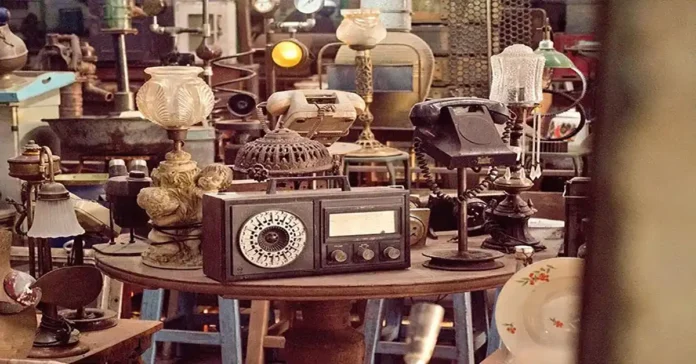Proper storage solutions are important for preserving your valuable paintings and antiques. Decluttering your space can make room for these precious items. Start by choosing the right storage solutions. Use sturdy shelves and protective covers. Avoid stacking items, as this can cause damage. During renovation, plan for built-in storage to save space and provide easy access. Renovation projects often create opportunities to improve storage options. Utilize utility storage to keep your antiques safe and organized.
Decluttering helps create a clean, organized environment. Sort through your belongings and keep only what you truly value. This makes storing and finding items easier. Utility storage is key. Use labeled boxes and containers. This keeps your antiques secure and easily accessible. Regularly check and maintain your storage areas to ensure they remain in good condition.
By following these simple tips, you can protect your valuable paintings and antiques. Proper storage ensures they stay in excellent condition for years to come.
Tip 1: Choose the Right Painting Storage Solutions
Choosing the right storage solutions is crucial for preserving your valuable paintings and antiques. Use sturdy shelves that can support the weight of your items. This prevents sagging and ensures stability. Protective covers are essential to shield your antiques from dust and light damage. Avoid stacking items on top of each other. Stacking can cause scratches, cracks, and other damage.
Consider climate-controlled storage for delicate items. Temperature and humidity fluctuations can harm paintings and antiques. Climate control helps maintain a stable environment, preventing deterioration. This is especially important for older, more fragile items.
Tip 2: Plan Painting Storage During Renovation
Planning storage during renovation can create ideal spaces for your antiques and paintings. Incorporate built-in storage solutions into your design. Built-in cabinets and shelves save space and provide a sleek, organized look. They also offer easy access to your items.
Design your storage spaces for accessibility and organization. Place frequently used items within easy reach. Store less-used items in higher or lower spots. Utilize underutilized spaces, like under stairs or in the attic. These areas are perfect for additional storage without cluttering your main living spaces.
Effective planning during renovation maximizes your storage options. It also ensures your antiques and paintings are safely stored. Proper planning helps create a functional and organized environment for your valuable items.
Tip 3: Declutter for Better Organization
Decluttering is essential for effective painting storage and antique preservation. Start by sorting and prioritizing your valuable items. Identify which pieces are most precious and need extra care. This helps in organizing them efficiently.
Use labeled boxes and containers for better organization. Label each box clearly with its contents. This makes it easy to find items quickly. Labeled boxes also prevent damage by ensuring everything has a designated place.
Creating a clean, organized environment is key. Remove unnecessary items from your storage area. This makes space for your antiques and paintings. A tidy space reduces the risk of accidental damage. It also makes your storage area more pleasant and functional.
Regularly reassess your items. As you acquire new pieces, decide which items to keep and which to let go. This continuous decluttering process ensures your storage remains organized and efficient.
Tip 4: Utilize Utility Storage
Utility storage solutions are vital for keeping your antiques and paintings safe. Labeled boxes and containers play a significant role here as well. They help in maintaining order and ensuring that each item is easy to locate.
Regular maintenance and checks of storage areas are crucial. Inspect your storage spaces frequently. Look for signs of wear or damage. Address any issues immediately to prevent further problems. This keeps your storage solutions in top condition.
Use utility storage solutions like racks and cabinets. Racks are perfect for storing framed paintings and larger items. They keep pieces off the ground and protect them from potential water damage. Cabinets provide secure storage for smaller antiques. They offer protection from dust and light.
Consider climate-controlled storage for delicate items. Temperature and humidity control can prevent deterioration. This is especially important for sensitive materials like wood, paper, and textiles.
Final Words
By implementing the tips discussed, such as decluttering, using labeled boxes and containers, and utilizing utility storage solutions like racks and cabinets, you can ensure that your paintings are kept safe and organized. Regular maintenance and checks of storage areas are also essential to prevent damage and deterioration over time. Additionally, considering climate-controlled storage for delicate paintings can further enhance their longevity.
By prioritizing proper painting storage techniques, you not only protect your valuable artworks but also create a space that is functional, efficient, and conducive to appreciating and enjoying your collection for years to come.
FAQs for Painting Storage
A1: Painting storage refers to the safekeeping and preservation of paintings, artworks, and canvases in a dedicated storage space.
A2: Painting storage is crucial to protect artworks from damage due to environmental factors like humidity, temperature fluctuations, and physical harm.
A3: Paintings should be stored upright in a climate-controlled environment, away from direct sunlight and moisture, and wrapped in acid-free materials.
A4: Climate-controlled storage maintains stable temperature and humidity levels, preventing warping, cracking, and mold growth in paintings.
A5: Yes, paintings can be stored in a self-storage unit with proper climate control, security measures, and adequate space for upright storage.
A6: Paintings should be packed in sturdy boxes or crates with padding to protect against impact during transport and storage.
A7: Handle paintings with clean hands and avoid touching the painted surface directly to prevent smudges or damage.
A8: Oil paintings require extra care in storage to prevent the paint from cracking or sticking. Store them upright and avoid extreme temperatures.
A9: Paintings should ideally be stored separately from other items to minimize the risk of damage from pressure or contact.
A10: Paintings should be checked periodically for signs of damage, mold, or pests, and any necessary measures should be taken promptly to ensure their preservation.







